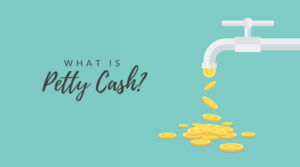For example, if a real estate broker is paid $8,000 as part of a transaction to purchase land for $100,000, the land would be recorded at a cost of $108,000. Companies should review these costs regularly to determine how to increase profitability. If business becomes slow, cutting back on overhead usually becomes the easiest way to reduce expenses. The same logic applies to supplies, prepaid rent, prepaid insurance and other costs that expire and are therefore reclassified from the statement of financial position to the statement of comprehensive income. Operating expenses are the expenses related to the company’s main activities, such as the cost of goods sold, administrative fees, office supplies, direct labor, and rent.
KLÉPIERRE: 2023 FULL-YEAR GUIDANCE RAISED TO AT LEAST … – GlobeNewswire
KLÉPIERRE: 2023 FULL-YEAR GUIDANCE RAISED TO AT LEAST ….
Posted: Tue, 01 Aug 2023 15:45:00 GMT [source]
Although indirect expenses are difficult to track, they are significant since they have an impact on total profitability. Costs don’t directly affect taxes, but the cost of an asset is used to determine the depreciation expense for each year, which is a deductible business expense. Depreciation is considered a “non-cash expense” because no one writes a check for depreciation, but the business can use it to reduce income for tax purposes. Operating costs are the expenses a business incurs in its normal day-to-day operations.
However, they are sub-categorized as direct, indirect, general, and non-cash expenses. Operating expenses, or OPEX for short, are the costs involved in running the day-to-day operations of a company; they typically make up the majority of a company’s expenses. Ideally, companies look to keep operating costs as low as possible while still maintaining the ability to increase sales. Any mischaracterization of asset usage is not proper GAAP and is not proper accrual accounting. Controllable costs are expenses managers have control over and have the power to increase or decrease.
Operating Costs
Next, because assets are typically more efficient and are used more heavily early in their life span, the double-declining method takes usage into account by doubling the straight-line percentage. For a four-year asset, multiply 25 percent (100%/4-year life)×2(100%/4-year life)×2, or 50 percent. For a five-year asset, multiply 20 percent (100%/5-year life)×2(100%/5-year life)×2, or 40 percent. Straight-line depreciation is efficient accounting for assets used consistently over their lifetime, but what about assets that are used with less regularity? The units-of-production depreciation method bases depreciation on the actual usage of the asset, which is more appropriate when an asset’s life is a function of usage instead of time. For example, this method could account for depreciation of a silk screen machine for which the depreciable base is $48,000 (as in the straight-line method), but now the number of prints is important.
For example, if we buy a delivery truck to use for the next five years, we would allocate the cost and record depreciation expense across the entire five-year period. Assets are recorded on the balance sheet at cost, meaning that all costs to purchase the asset and to prepare the asset for operation should be included. Costs outside of the purchase price may include shipping, taxes, installation, and modifications to the asset. To better understand the nature of fixed assets, let’s get to know Liam and their new business. Liam is excited to be graduating from their MBA program and looks forward to having more time to pursue their business venture. During one of their courses, Liam came up with the business idea of creating trendy workout attire.
Main Differences Between Cost and Expense
An asset’s depreciation may change over its life according to its use. If asset depreciation is arbitrarily determined, the recorded “gains or losses on the disposition of depreciable property assets seen in financial statements”6 are not true best estimates. Due to operational changes, the depreciation expense needs to be periodically reevaluated and adjusted.
The useful life is the time period over which an asset cost is allocated. It’s also key to note that companies will capitalize a fixed asset if they have material value. A $10 stapler to be used in the office, for example, may last for years, but the value of the item is not significant enough to warrant capitalizing it. Wages, salaries, additional compensation, payroll tax, commissions (which can also be considered in the cost of goods sold), benefits, and a pension plan are all examples of compensation. Accounting expenses, depreciation of fixed assets, insurance costs, legal fees, office supplies, property taxes, rent, repairs and maintenance, and utilities are all part of office management.
When You Should Use Expenses
As a prepaid cost such as the $6,000 in the asset account Prepaid Insurance expires, the part that expires will be reported on the income statement as Insurance Expense. In other words, depreciation expense represents the amount of the cost for the property, plant, and equipment that was consumed during the period. If we say ‘supplies expense was 1200 dollars’, then we know that supplies that cost 1200 dollars have been consumed and are therefore no longer available for future use in the business. However, the term expense does not tell us whether payment has been made or not.
Operating expenses, more commonly known as OPEX, are the indirect expenses incurred to keep a business operational and running. Factory overhead is described as the services directly involved in the manufacturing process. It can include the electricity bill of the manufacturing unit, gas, telephone, maintenance of machinery & equipment, etc. A company’s management will try to grow revenue while simultaneously keeping operating expenses under control. It is important to note, however, that not all long-term assets are depreciated.
- Operating expense is deducted from revenue to arrive at operating income; the amount of profit a company earns from its direct business activities.
- As stated previously, to capitalize is to record a long-term asset on the balance sheet and expense its allocated costs on the income statement over the asset’s economic life.
- While this is typically synonymous with operating expenses, many times companies list SG&A as a separate line item on the income statement below cost of goods sold, under expenses.
- Expenses can be defined as fixed expenses, such as rent or mortgage; those that do not change with the change in production.
In Liam’s case, the $5,000 for this machine should be allocated over the years in which it helps to generate revenue for the business. As stated previously, to capitalize is to record a long-term asset on the balance sheet and expense its allocated costs on the income statement over the asset’s economic life. Therefore, when Liam purchases the machine, they will record it as an asset on the financial statements (see journal entry in Figure 4.8). Businesses typically need many different types of these assets to meet their objectives.
All the expenses not directly tied to the acquisition of inventory of sale or manufacturing of the company’s product are treated as operational expenses. Operational costs are deducted from the gross definition and different types of income tax margin to get an operating profit of a firm. For example, the business may need to spend money on research and development, equipment purchases, a lease on office space, and employee wages.
Long-term assets that are not used in daily operations are typically classified as an investment. For example, if a business owns land on which it operates a store, warehouse, factory, or offices, the cost of that land would be included in property, plant, and equipment. However, if a business owns a vacant piece of land on which the business conducts no operations (and assuming no current or intermediate-term plans for development), the land would be considered an investment. When capitalizing an asset, the total cost of acquiring the asset is included in the cost of the asset. This includes additional costs beyond the purchase price, such as shipping costs, taxes, assembly, and legal fees.
Example of an Expense
The IRS treats capital expenses differently than most other business expenses. While most costs of doing business can be expensed or written off against business income the year they are incurred, capital expenses must be capitalized or written off slowly over time. Non-operating expenses are separate from operating expenses from an accounting perspective so as to be able to determine how much a company earns from its core activities. However, we use the term cost to mean the amount spent to purchase an item, a service, etc.
ATARI: FY2023 ANNUAL RESULTS – GlobeNewswire
ATARI: FY2023 ANNUAL RESULTS.
Posted: Tue, 01 Aug 2023 06:01:00 GMT [source]
In our commercial talks, we use the two terms interchangeably, yet they have different meanings and applications. We’ll look at cost and expense in general, as well as how they pertain to accounting and taxes in businesses. The majority of individuals make the error of assuming that cost and expense have the same meaning, which they do. Expense is the term used to describe the cost of manufacturing and operations.
The operating cost is deducted from revenue to arrive at operating income and is reflected on a company’s income statement. Each year, the accumulated depreciation balance increases by $9,600, and the machine’s book value decreases by the same $9,600. At the end of five years, the asset will have a book value of $10,000, which is calculated by subtracting the accumulated depreciation of $48,000 (5×$9,600)$48,000 (5×$9,600) from the cost of $58,000.

For example, a company decides to buy a new piece of manufacturing equipment rather than lease it. Variable costs fluctuate as the level of production output changes, contrary to a fixed cost. This type of cost varies depending on the number of products a company produces. A variable cost increases as the production volume increases, and it falls as the production volume decreases. They may also be semi-variable, so the amounts that need to be paid may change slightly over time.
Other Operating Expenses
Investors must monitor costs to see if they’re increasing or decreasing over time while also comparing those results to the performance of revenue and profit. The economies of scale principle can be limited in that fixed costs generally need to increase with certain benchmarks in production growth. When analyzing depreciation, accountants are required to make a supportable estimate of an asset’s useful life and its salvage value. The expense recognition principle that requires that the cost of the asset be allocated over the asset’s useful life is the process of depreciation.

Some differences exist despite both being recorded as an expense and deducted from the net sales. These differences must be identified to track costs related to business offerings (product or service) and expenses incurred for meeting day-to-day requirements. Indirect costs, often known as untraceable costs, are expenses that are not directly related to a specific company activity or component. For example, an increase in power rates or income taxes is an example.
Comentários